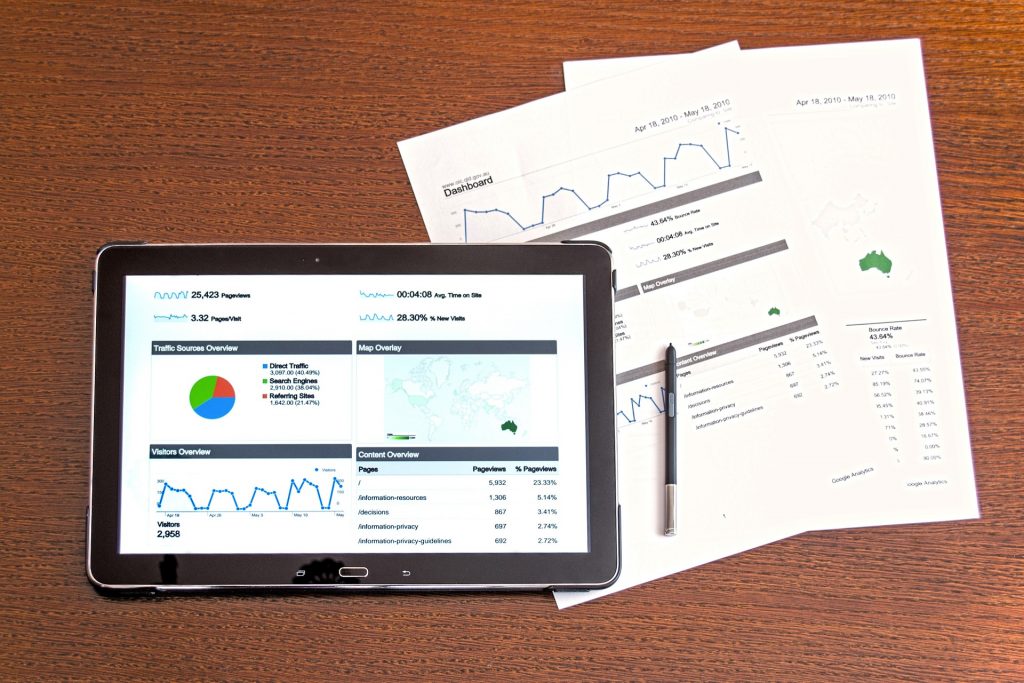Master Bing Ads Campaign Management for Better Results
In today’s world, businesses have a plethora of digital marketing tools at their disposal. One such tool is Bing Ads, which allows businesses to advertise their products and services on the Bing search engine.
Bing Ads, like other search engine advertising platforms, enables businesses to reach out to their target audience with precision, thereby increasing their chances of conversion. This article will guide you on how to master Bing Ads campaign management for better results.

Importance of Bing Ads
Bing Ads is an important tool for businesses to consider when it comes to digital marketing. Bing is the second most popular search engine in the world after Google, with a market share of over 10%.
Therefore, advertising on Bing can be beneficial for businesses looking to reach a wider audience. Moreover, Bing Ads allows for specific targeting options, making it easier for businesses to reach their ideal customer base.
Benefits of using Bing Ads
There are several benefits to using Bing Ads, including:
- Lower cost per click compared to Google Ads
- Ability to reach a wider audience beyond Google users
- Easy integration with Microsoft products such as Excel and Power BI
- Access to advanced targeting options
Set up a Bing Ads campaign
Setting up a Bing Ads campaign is relatively straightforward. Here are the steps to follow:
Create an account
The first step is to create a Bing Ads account. This involves filling in your business details and creating a login. You can sign up for Bing Ads at advertise.bingads.microsoft.com.
Set up billing
Once your account is set up, the next step is to add billing information. Bing Ads offers various payment options, including credit cards and PayPal.
Create your first campaign
To create a campaign, you need to decide on the campaign’s objective, such as increasing website traffic or driving sales. You will also need to set a budget and target audience, and create ad groups.
If you want help with the campaign set up and you’re looking for an experienced digital marketing agency to manage your Bing advertising, contact Breed Digital today.
Keyword research
Keywords are a crucial aspect of Bing Ads campaign management. Here are some tips on how to conduct keyword research:
Importance of keywords
Keywords are the phrases or words that users search for on search engines. Therefore, using relevant keywords in your ad copy can increase the likelihood of your ads appearing to the right audience.
How to find relevant keywords
Here are some ways to find relevant keywords:
Use Bing’s Keyword Planner
Bing’s Keyword Planner is a useful tool for finding relevant keywords. It allows you to enter your product or service and provides a list of related keywords and their search volumes.
Analyse competitors’ keywords
Another way to find relevant keywords is to analyse your competitors’ keywords. This involves looking at the keywords your competitors are using through tools like SEM rush to understand what your competitors are ranking for.
Utilise long-tail keywords
Long-tail keywords are phrases that are more specific and have lower search volumes. However, they can be highly relevant to your target audience, and using them can increase your chances of conversion.
Consider user intent
Understanding user intent is crucial for keyword research. You need to identify the searcher’s intent behind a particular search and create ad copy that matches that intent.

Ad creation
Ad creation is an important aspect of Bing Ads campaign management. Here are some tips on how to create and optimise your ads:
Write compelling ad copy
The ad copy is the text that appears in your ads. Writing compelling ad copy can increase the chances of users clicking on your ads. Here are some tips on how to write effective ad copy:
Use strong headlines
Your headline should be attention-grabbing and relevant to the user’s search query.
Highlight unique selling points (USPs)
Your ad copy should highlight what makes your product or service unique and stand out from the competition.
Include a clear call-to-action (CTA)
Your ad copy should include a clear call-to-action, such as “buy now” or “learn more”, to encourage users to take action.
Use ad extensions
Ad extensions are additional pieces of information that appear in your ads, such as phone numbers or site links. Using ad extensions can increase the chances of users clicking on your ads. Here are some types of ad extensions you can use:
Sitelink extensions
Sitelink extensions provide additional links to specific pages on your website.
Call extensions
Call extensions provide users with a phone number they can click to call your business directly from the ad.
Location extensions
Location extensions display your business’s address and a map to your location.
Structured snippet extensions
Structured snippet extensions allow you to highlight specific aspects of your product or service, such as features or styles.
Targeting and bidding strategies
Targeting and bidding strategies are essential for Bing Ads campaign management. Here are some tips on how to target your ads effectively and choose the right bidding strategy:
Audience targeting
Audience targeting involves selecting the right audience for your ads. Here are some targeting options to consider:
Geographic targeting
Geographic targeting allows you to target users in specific locations, such as countries or cities.
Demographic targeting
Demographic targeting involves targeting users based on demographic information, such as age, gender, and income.
Device targeting
Device targeting allows you to target users on specific devices, such as desktops, tablets, or smartphones.
Time of day targeting
Time of day targeting allows you to target users at specific times of the day or days of the week.
Bidding strategies
Bidding strategies determine how much you are willing to pay for each click on your ad. Here are some bidding strategies to consider:
Manual bidding
Manual bidding involves setting your bids manually for each keyword.
Automated bidding
Automated bidding involves letting Bing Ads set your bids based on your budget and campaign goals.
Enhanced CPC (eCPC)
Enhanced CPC is a bidding strategy that adjusts your bids in real-time based on the likelihood of conversion.
Maximise conversions
Maximise conversions is a bidding strategy that automatically adjusts your bids to maximise conversions within your budget.

Monitor and optimise campaign performance
Monitoring and optimising your Bing Ads campaign performance is crucial for achieving better results. Here are some tips on how to monitor and optimise your campaign:
Use Bing Ads reporting tools
Bing Ads provides several reporting tools that can help you monitor your campaign’s performance. Here are some of the tools
Performance reports
Performance reports provide an overview of your campaign’s performance, including clicks, impressions, and conversions.
Conversion tracking
Conversion tracking allows you to track how many users are taking specific actions on your website after clicking on your ad, such as making a purchase or filling out a form.
Keyword performance reports
Keyword performance reports allow you to see how well your keywords are performing and make adjustments as needed.
Ad extension performance reports
Ad extension performance reports allow you to see how well your ad extensions are performing and make adjustments as needed.
Analyse and optimise key performance indicators (KPIs)
Key performance indicators (KPIs) are metrics that help you measure your campaign’s success. Here are some KPIs to monitor and optimise:
Click-through rate (CTR)
CTR is the percentage of users who click on your ad after seeing it. A higher CTR indicates that your ad copy and targeting are effective.
Cost per click (CPC)
CPC is the amount you pay each time a user clicks on your ad. Monitoring and optimising your CPC can help you stay within your budget.
Conversion rate
Conversion rate is the percentage of users who take a specific action on your website after clicking on your ad. Optimising your conversion rate can increase your ROI.
Return on ad spend (ROAS)
ROAS is the amount of revenue generated for every pound spent on advertising. Monitoring and optimising your ROAS can help you determine the effectiveness of your campaign.
Conduct A/B testing
A/B testing involves testing different versions of your ad to see which one performs better. Here are some elements you can test:
Test different ad copy variations
Testing different ad copy variations can help you determine which messaging resonates best with your target audience.
Test different bidding strategies
Testing different bidding strategies can help you determine which strategy provides the best ROI for your campaign.
Test various landing pages
Testing various landing pages can help you determine which pages lead to the highest conversion rates.
Continuously refine keywords
Refining your keywords involves adding negative keywords, adjusting match types, and implementing keyword bid adjustments. Here are some tips:
Add negative keywords
Negative keywords are keywords that you don’t want your ads to appear for. Adding negative keywords can help you refine your targeting.
Adjust keyword match types
Keyword match types determine how closely a user’s search query must match your keyword for your ad to appear. Adjusting match types can help you refine your targeting.
Implement keyword bid adjustments
Keyword bid adjustments involve adjusting your bids for specific keywords based on their performance. Implementing bid adjustments can help you maximise your ROI.

Conclusion
In conclusion, mastering Bing Ads campaign management can lead to better results for your business. By following the steps outlined in this article, including setting up a campaign, conducting keyword research, creating compelling ads, targeting the right audience, and continuously monitoring and optimising your campaign, you can increase your chances of success with Bing Ads.
If you’re looking for an experienced Bing Ads expert, then speak with Breed Digital today for a no obligation audit of your account.
FAQs
Q: What is Bing Ads?
A: Bing Ads is a digital marketing tool that allows businesses to advertise on the Bing search engine.
Q: Why is Bing Ads important for businesses?
A: Bing Ads is important for businesses because it allows them to reach a wider audience and target specific demographics with precision.
Q: What are the benefits of using Bing Ads?
A: The benefits of using Bing Ads include lower competition, cost-effective advertising, and the ability to reach an audience that may not use other search engines.
Q: How do I create a Bing Ads campaign?
A: To create a Bing Ads campaign, you need to set up an account, set up billing, create your first campaign, conduct keyword research, create compelling ads, target the right audience, and continuously monitor and optimise your campaign.
Q: What are some key performance indicators (KPIs) to monitor when managing a Bing Ads campaign?
A: Some key performance indicators to monitor when managing a Bing Ads campaign include click-through rate (CTR), cost per click (CPC), conversion rate, and return on ad spend (ROAS). By monitoring and optimising these metrics, you can improve the effectiveness of your campaign and increase your ROI.









